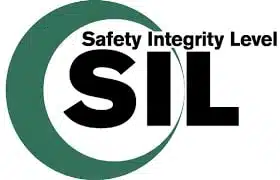Last edit: 26/06/2023

According to IEC 61508, failures can be classified as either random hardware failures or systematic failures. The challenge to anyone designing a complex system, such as a programmable electronic system, is to determine how much confidence is necessary for the specified safety level. IEC 61508 tackles this on the following basis:
- that it is possible to quantify the random hardware failures
- that is not usually possible to quantify systematic failures.
IEC 61508 series specifies 4 levels of safety performance for a safety function. These are called safety integrity levels. Safety integrity level 1 (SIL1) is the lowest level and safety integrity level 4 (SIL4) is the highest level. The standard details the requirements necessary to achieve each safety integrity level. These requirements are more rigorous at higher levels of safety integrity, in order to achieve the required lower likelihood of dangerous failures.
An E/E/PE safety-related system will usually implement more than one safety function. If the safety integrity requirements for these safety functions differ, unless there is sufficient independence of implementation between them, the requirements applicable to the highest relevant safety integrity level shall apply to the entire E/E/PE safety-related system.
If a single E/E/PE system is capable of providing all the required safety functions, and the required safety integrity is less than that specified for SIL 1, then IEC 61508 does not apply.
As previously stated, in order to design a reliable safety control system, two aspects have to be considered:
- Hardware Safety Integrity. This is achieved through meeting the quantified target failure measures for random failures, together with meeting the Architectural Constraints for the specified SIL.
- Systematic Safety Integrity. It is a group of measures used to avoid systematic failure mechanisms; they are in general qualitative measures with increasing rigour, assurance and confidence, the higher the SIL.
Therefore, Safety Integrity is made up of Hardware Safety Integrity, in relation to random failures, and Systematic Safety Integrity, in relation to systematic failures.